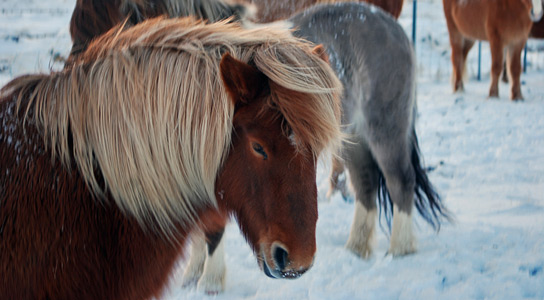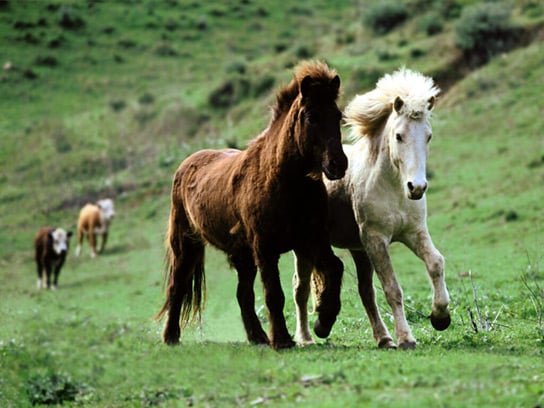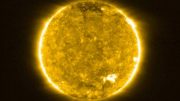
Icelandic horse.
In horses, unusual gaits have been traced to a single mutation. This endows them with a wider repertoire of gaits, showing that some seemingly complex physical traits can have a simple genetic basis. This could also elucidate the genes behind movement disorders in humans.
The researchers published their findings in the journal Nature. Horses typically have three styles of gait, walking, trotting, and galloping. However, certain breeds can perform extra gaits, such as pacing, in which the legs on one side of the body move together. This can be useful in certain types of racing, and breeds like the American Standardbred and some Icelandic horses can pace.

Leif Andersson, a geneticist at Uppsala University in Sweden, who led the study, studied the genomes of 70 horses that could perform extra gaits. 40 could do pacing and 30 could perform alternate gaits. The analysis of the genes revealed that a single mutation in a gene called DMRT3 was common to all horses that could pace.
The control of gait seems a complicated trait, but the results were simple. In order to confirm it, the researchers studied its function in mice, and found that mice with no functional copy of the gene had trouble coordinating their limbs. The gene was also expressed in cells in the mouse spinal cord that connects to motor neurons.
Horses without this single mutation cannot move their hindleg and right foreleg forward simultaneously, but with it, the regulation of movement isn’t so strict. It shortens the encoded protein by about one-third.
This work could provide a basis for further studies of movement disorders in humans. Studies indicate that movement disorders in humans feature similar phenotypes to the ones found in horses. The relationship might not be as simple as the one in horses and pacing, but walking difficulty is a common symptom of many neuromuscular disorders.
Reference: “Mutations in DMRT3 affect locomotion in horses and spinal circuit function in mice” by Lisa S. Andersson, Martin Larhammar, Fatima Memic, Hanna Wootz, Doreen Schwochow, Carl-Johan Rubin, Kalicharan Patra, Thorvaldur Arnason, Lisbeth Wellbring, Göran Hjälm, Freyja Imsland, Jessica L. Petersen, Molly E. McCue, James R. Mickelson, Gus Cothran, Nadav Ahituv, Lars Roepstorff, Sofia Mikko, Anna Vallstedt, Gabriella Lindgren, Leif Andersson and Klas Kullander, 29 August 2012, Nature.
DOI: 10.1038/nature11399









Be the first to comment on "Extra Gaits in Horses Traced to Single Mutation"